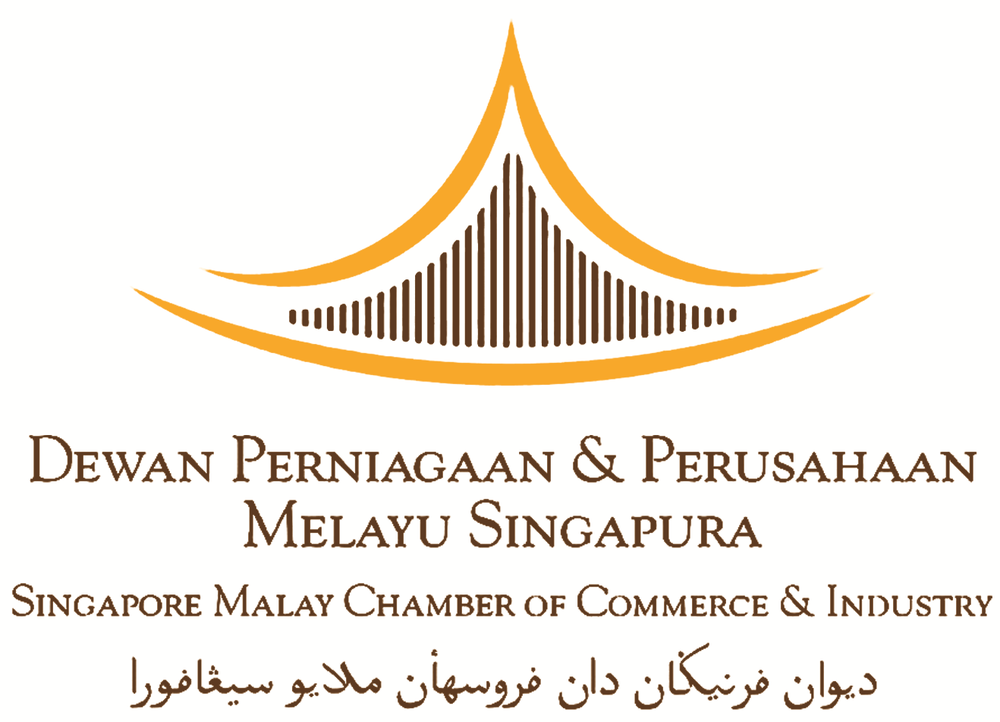- Real CBS Makeovers: 3 Case Studies of SME Owners Who Turned Bad Credit Around
- Ask SmartLend: Why Did My SME Loan Get Rejected?
- Introducing SmartLend Concierge: A Helping Hand for SME Loans
- Legal Ways to Lighten Your Company’s Tax Burden in Singapore
- A Wake-Up Call on Director Duties: The Envy Saga and Other Cautionary Tales in Singapore
- Surviving Cash Flow Crunch: How SMEs Can Use Short-Term Financing Wisely
- Unmasking Business Loan Fraud: How Syndicates and Rogue Brokers Game Singapore’s Lending System—and How AI Can Stop Them
- From Rejection to $60K Approval in 3 Days: How a Fishing Pond Business Got Funded Despite a Flawed Credit Report
- Lender Spotlight: How Poss Capital and SmartLend Partnered For Singapore SMEs
- Which Lender is Right for Your Business in 2025? Banks, Money Lenders, or Alternative Finance
Navigating Employee Benefits Across ASEAN: What Sets Singapore Apart

Introduction
As a business owner or human resources manager in Singapore, you know that attracting and retaining talented employees is essential for your organization's success. One of the most critical ways to do so is by offering attractive employee benefits packages. But with so many different options and regulations to consider, navigating employee benefits can be a daunting task. In this article, we will explore what sets Singapore apart in terms of employee benefits and how does our employee benefits compared to our neighbouring countries.
Understanding Employee Benefits in ASEAN
Before we dive into what sets Singapore apart, let's first understand employee benefits in ASEAN. The Association of Southeast Asian Nations (ASEAN) is a regional intergovernmental organization made up of ten member countries, including Singapore, Vietnam, Malaysia, Thailand, and Indonesia, etc. Each country has its own unique laws and regulations regarding employee benefits.
However, there are some common employee benefits across ASEAN, including:
| Mandatory Benefits | All countries in ASEAN have some mandatory benefits that employers must provide to their employees. These typically include items such as paid leave, health benefits, and retirement savings. |
| Additional Benefits | In addition to mandatory benefits, many companies offer additional benefits to attract and retain employees. These may include items such as flexible work arrangements, wellness programs, and education reimbursement. |
| Tax Implications | Employee benefits can have tax implications for both the employer and the employee. Different countries have different tax laws, so it's important to work with a qualified tax professional to ensure compliance. |
Navigating Employee Benefits in Singapore
Now that we have a better understanding of employee benefits in ASEAN, let's focus on what sets Singapore apart. Singapore, a popular country, has one of the most comprehensive employee benefits systems in the region, with a range of mandatory and optional benefits for employees.
When it comes to providing employee benefits, Singapore has specific laws that companies must follow. The country's Employment Act serves as the main labor law, outlining the basic conditions and benefits that employers must provide to their employees. It is important to know who is covered under this act.
The Employment Act covers all employees, regardless of their nationality, who are under a contract of service with an employer. This includes full-time, part-time, and temporary employees, as well as those who are paid hourly, daily, monthly, or based on piece-rate.
The Act does not apply to civil servants, domestic workers, and seafarers, as their work conditions and benefits are instead determined by their employment contracts.
Recently, on April 1, 2019, amendments were made to the Employment Act, which now includes coverage of managers and executives earning more than S$4,500 a month, including lawyers, accountants, doctors, and dentists. But what does this mean for benefits provisions?
Did you know that if you're an EA Employee, you're entitled to some amazing benefits like annual leave, paid medical leave, and public holiday pay? Unfortunately, if you're an independent contractor, you won't be able to enjoy these statutory benefits. But don't worry, your benefits and remuneration will be determined by the contractual agreement between you and the business. So make sure you negotiate a sweet deal for yourself!
Understanding the distinction between employee and contractor status is crucial, especially in the context of global employment. The determination made by legislators holds the most weight, and if a worker is classified as an employee but does not receive statutory benefits, the company may face significant risks and consequences for misclassification.
Singapore's Employment Act serves as a critical guide for companies operating in the country, ensuring that their employees receive the benefits they are legally entitled to receive. As a result, it is crucial to understand the specific provisions of the Employment Act, as noncompliance can result in significant financial and legal consequences.
Let's take a closer look at some of the key benefits outlined in the Employment Act:
Mandatory Benefits in Singapore
The Singapore government mandates several employee benefits that employers must provide to their employees, including:
- Central Provident Fund (CPF)
The CPF is a mandatory savings scheme for employees, with both the employer and employee contributing a percentage of the employee's salary to the fund. The CPF is used to provide retirement, healthcare, and housing benefits.
We have recently updated and explained how CPF works for employees in Singapore in our latest article.
- Work Injury Compensation Insurance
Work Injury Compensation Insurance (WICA) is an important part of any business’s risk management strategy. It provides financial protection against claims made by employees who are injured at work, or their dependents if they die as a result of such injuries. The benefits provided under this type of insurance include medical care expenses, lost wages, and vocational rehabilitation services.
Read here for more: Step-by-Step Guide: Top 7 Reasons Why SMEs Should Buy Work Injury Compensation Insurance
- Leave Benefits
Leave benefits are an essential aspect of any employee benefits package. In Singapore, employers are required to offer their employees paid annual leave, medical leave, and maternity/paternity leave. More details of different leave benefits are described below:
| Paid Leave | Employers must provide their employees with paid leave, including annual leave, sick leave, and public holidays. The number of days varies based on the employee's length of service and job level. |
Employees' leave entitlements increase with their length of employment and reach up to 14 days after eight years. Part-time workers are eligible for pro-rata rates. Full-time employees can enjoy 11 paid public holidays per year. Sick leave and hospitalization leave are available to employees who meet specific criteria, such as certified registration of illness. Sick leave is capped at 14 days, while hospitalization leave is limited to 60 days. |
| Healthcare Benefits | Employers must provide medical benefits to their employees, including access to medical insurance and reimbursement for medical expenses. | In Singapore, employers are required to offer their employees basic healthcare coverage under the MediShield Life scheme. Employers can also offer additional healthcare benefits such as dental and vision coverage. |
| Maternity Leave | Eligible working mothers will be able to benefit the tax relief amount depending on the number of children they have. For the first child, mothers can claim up to S$8,000, while for the second child, the maximum amount increases to S$10,000. For every subsequent child, the maximum tax relief amount further increases to S$12,000 each. |
A mother who is employed has the choice of either a 16-week Government-Paid Maternity Leave (GPML) if her child is a citizen of Singapore or a 12-week leave if the child is a foreign resident.
|
| Paternity Leave | A working father is also entitled to Government-Paid Paternity Leave who have children born on January 1, 2017, or after. | Recently in Singapore Budget 2023, paid paternity leave is increased to 4 weeks now. |
| Childcare Leave |
Offering this extra benefit presents another chance for a global employer to promote equity among its global workforce. This approach can help foster trust and harmony among employees. | For children under seven who are Singapore citizens, parents are eligible for up to six days of paid leave per year. For non-Singaporean children, parents are eligible for up to two days of paid leave per year. |
Employee Assistance Programs
Employee assistance programs (EAPs) are optional benefits that companies can offer to their employees. EAPs provide employees with access to counseling services and other resources to help them deal with personal or work-related issues.
You can read more about Employee Training Grants available in Singapore here.
Commuting and Travel Benefits
These benefits include reimbursement for commuting expenses, travel allowances, and company-sponsored trips. They can differ from one company to another, some might offer free-commute trips or vehicle-support plans for highly-skilled professionals.
Did you know? According to Hawksford's article on 2 November 2020, due to various employment visas available to foreign professionals, try and picture this: a whopping 400,000 Malaysians were residing and working there back then, and another 300,000 braving the daily hustle from Johor, this is one serious cross-border workforce.
Optional Benefits in Singapore
In addition to the mandatory benefits, many employers in Singapore offer additional benefits to attract and retain employees. Some of the most popular optional benefits include:
Flexible Work Arrangements
Since the COVID pandemic has been greatly aligned with working conditions in the market globally, Singapore companies have adapted in offering flexible work arrangements, such as telecommuting or flexible hours, to help employees achieve a better work-life balance.
You may love to read more on this here: What's New: Release Of Tripartite Guidelines For Flexible Work Arrangements In 2024.
Wellness Programs
Some companies offer wellness programs to help employees maintain their physical and mental health. These may include activities such as fitness classes, mental health resources, and healthy eating programs. From one of the anonymous Reddit section under askSingapore here, a company was happy to offer an employee $500 wellness budget as an extra incentive (that's a total of $6,000 a year)! Sadly, the story did not proceed further due to the employee not joining the company afterall.
Comparison Table For Employee Benefits Between ASEAN Countries
| Benefit Type | Singapore | Indonesia | Malaysia | Thailand |
Vietnam |
| Healthcare Coverage | Comprehensive | Limited | Comprehensive | Limited | Basic |
| Retirement Plans | CPF Contributions | Mandatory pension plans | Mandatory EPF savings | Provident funds | Mandatory Social Security funds |
| Paid Time Off (annual) | Minimum of 7 days | Minimum of 12 days | Minimum of 8 days | Minimum of 6 days | Minimum of 12 days |
| Maternity Leave | 16 weeks | 12 weeks | 98 days | 98 days | 6 months |
| Paternity Leave | 4 weeks (Budget 2023) | Not mandated, up to 5 days | Not mandated, up to 14 days | Not mandated, up to 30 days | Not mandated, up to 30 days |
Conclusion
Navigating employee benefits in the ASEAN region can be a challenging task, but it's necessary for attracting and retaining talented employees including foreign and top-quality local talents. Singapore's employee benefits system is noteworthy for its inclusiveness, covering both mandatory and optional, but yet, valuable benefits.
This article has examined the common benefits that companies in Singapore offer. A complete package can improve employee contentment, reduce turnover, and lead to greater productivity and profitability.
Like we said before, as a business owner or HR manager in Singapore, it's crucial to stay up-to-date with the latest regulations and trends in employee value-based benefits also.
Love to read more articles like this? Visit our blog section here and check out what's in store for your business!
Read also: Introducing Unemployment Support In Budget 2023? What Can We Expect
Read also: Navigating Singapore's Budget 2023: What Businesses Need to Know
-------------------------------------------------------------------------------------------------------
Got a Question?
WhatsApp Us, Our Friendly Team will get back to you asap :)
Share with us your thoughts by leaving a comment below!
Stay updated with the latest business news and help one another become Smarter Towkays. Subscribe to our Newsletter now!
Related
.png)
Which Lender is Right for Your Business in 2025? Banks, Money Lenders, or Alternative Finance
Jul 02, 2025














